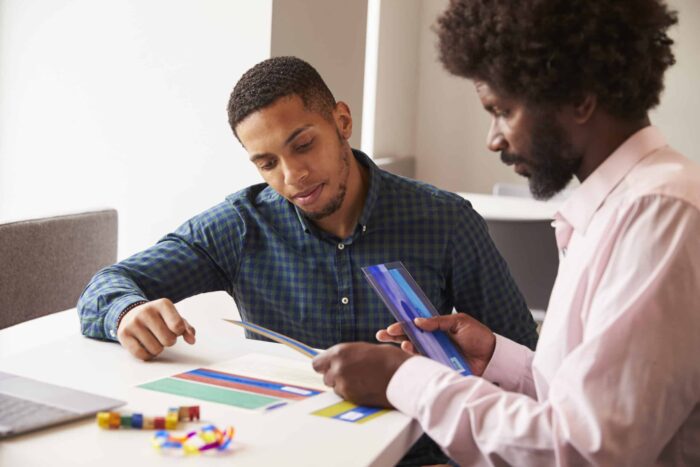
Breaking Down Barriers: Creating Inclusive Learning Environments
April 10, 2024 5:59 pmEvery child wants to go to school in an environment where they feel included, safe, and accepted. Inclusive classroom practices give students equal opportunity to learn and succeed, regardless of their backgrounds, abilities, or impairments.
In both the short and long term, inclusionary classrooms benefit students in many ways, including increased attendance, improved academic performance, and fewer behavioral issues. So, we can see how vital inclusive teaching is for promoting diversity in education. Let’s explore how professional educators can implement strategies for inclusive teaching for young students from various backgrounds and ability levels.
Best Practices for Building an Inclusive Classroom: What You Can Do
Most teachers dedicate weeks of the school year, especially the first few, to creating a classroom atmosphere that prioritizes the value and inclusion of every student. How can you make sure that the core of everyday training is inclusivity? Beyond conventional teaching techniques, inclusive classroom practices acknowledge and value each learner’s characteristics.
Here are some inclusive resources for teachers that can open doors to a flourishing and compassionate society:
- Start By Building a Community Mindset
To be truly inclusive, a classroom needs to provide children with a sense of belonging, a sense of community, and acceptance of their individuality. Teachers must make it highly evident that everyone respects others’ opinions, is empathetic toward others, and refrains from bullying students for misbehaving, not comprehending, or just being wrong to accomplish this.
Teachers can foster an inclusive and community-minded learning environment inside their school by facilitating chances for kids to interact with one another, share their abilities and traits, and cultivate relationships. Through community-building exercises, students can connect and form new friendships with classmates they might not have met. Teachers can use their students’ differences as a teaching tool to help them learn acceptance and compassion.
- Create Accessible Learning Opportunities
For any teacher, getting to know their students and customizing their medium of instruction to meet their needs should be top priorities. You should give every child the chance to learn in a way that suits them best by utilizing various teaching techniques.
Some students could struggle with reading because of learning difficulties such as dyslexia. To assist them in staying up with their classmates, they might need additional audio or video content. Ultimately, this is to make sure that students are included even if they require something different from their peers.
You can bring diversity to education by dividing activities into manageable chunks, allowing pupils to answer differently, using visual aids and simplified texts, or allowing children extra time to do assignments.
- Develop a Rapport With Students and Their Parents
Bonding with your students is a process that requires time. Encourage lasting relationships by fostering open communication by allowing them to talk to you about their interests, challenges, and goals and share your own. It’s also important to ensure that their input is considered and taken action by giving them a voice in the school community.
One of the key strategies for inclusive teaching is continuing to discuss issues with parents and caregivers and even gaining professional certification. You can work together to create individualized learning objectives highlighting each student’s strengths while providing enough difficulty to foster growth.
- Implement Behavioral Guidelines
Although a classroom is supportive, disputes that need to be settled amicably can occasionally become a haven for unrest and disruptive behavior. You should make general classroom rules obvious, maybe by posting them somewhere that all students can see them, to reduce any situations involving children with special needs effectively.
Consider how practice, modeling, and prompting help students acquire socially acceptable behaviors. For instance, actively instruct kids on speaking up in a quarrel or using open-ended questions during small conversations. By recognizing the messages a student attempts to convey through their actions, teachers can help them find more effective ways to express their needs and desires.
Enrolling in the Neuhaus Education Center is one step towards developing inclusive learning resources for teachers that meet students’ varied demands. With our professional development curriculum and training, you can establish a setting where everyone may flourish and participate in the educational process by giving universal design top priority in educational infrastructure. Enroll now and learn how Neuhaus Education Center can support you in building an inclusive classroom!